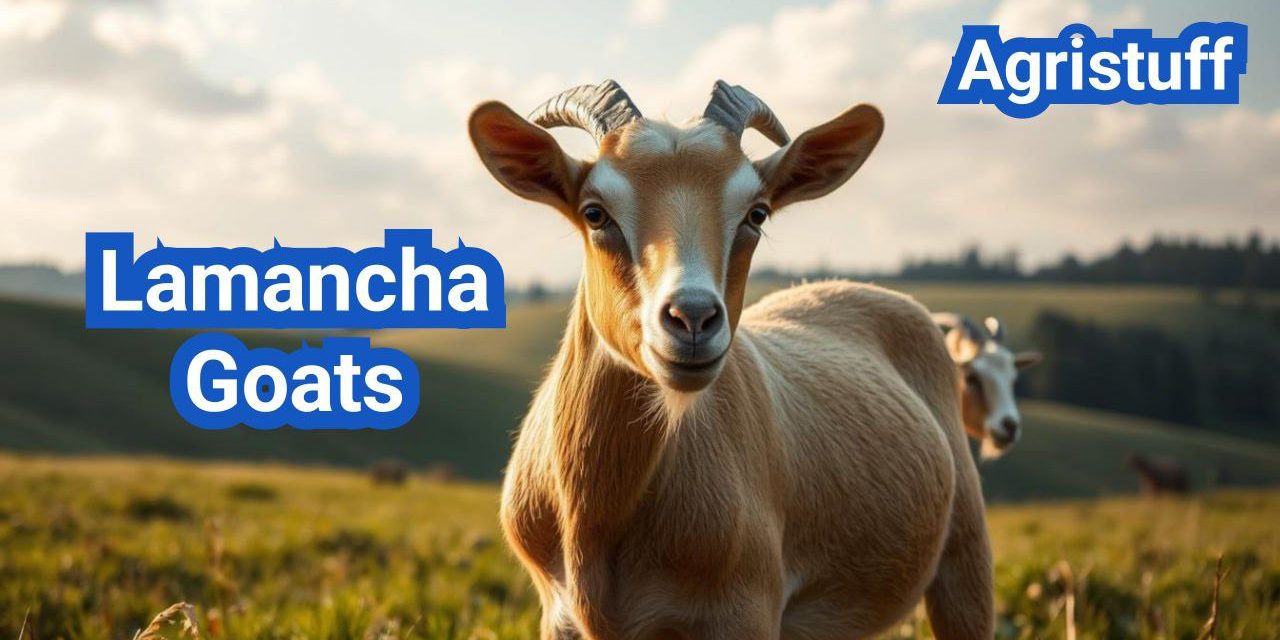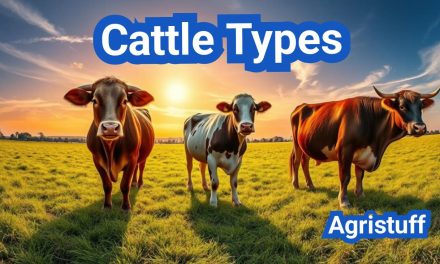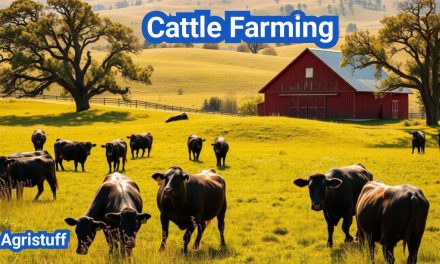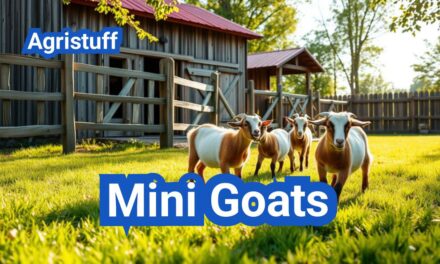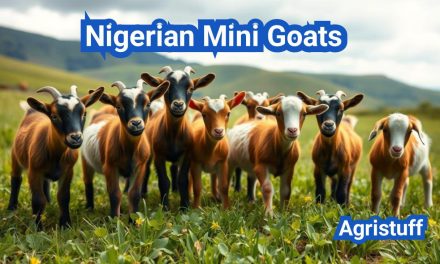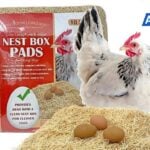The American Lamancha ( Lamancha Goats ) is a unique dairy breed known for its very short ear pinnae and high milk production. Originating in the United States, this breed has gained popularity for its distinctive features and dairy qualities.
First bred in California by Mrs. Eula Fay Frey around 1927, the Lamancha goat has become a recognized breed in the dairy goat community. Its characteristics make it an attractive choice for goat dairy farming.
Key Takeaways
- American Lamancha is a formally recognized dairy goat breed.
- It is known for its very short ear pinnae.
- Originated in California, USA.
- High milk production makes it a popular dairy choice.
- First bred by Mrs. Eula Fay Frey around 1927.
The Unique World of Lamancha Goats
With their distinctive ear types, Lamancha goats stand out in the world of dairy farming. Their uniqueness is not just limited to their physical characteristics but also extends to their milk production capabilities.
What Makes Lamanchas Stand Out in the Dairy World
Lamancha goats are perhaps the most distinctive goat breed, easily recognizable by their very short ear pinnae. This characteristic, along with their high milk production and comparatively high butterfat content, makes them a favorite among dairy farmers.
High milk production and rich butterfat content are key factors that contribute to their popularity. The breed’s ability to produce high-quality milk with a rich flavor profile is unmatched by many other dairy goat breeds.
Overview of Their Distinctive Traits
The Lamancha breed is characterized by two main ear types: gopher ears and elf ears. Gopher ears are very short, with little or no cartilage, while elf ears are slightly longer with more cartilage. Both types are acceptable according to breed standards.
- Gopher ears: Very short, with minimal cartilage.
- Elf ears: Slightly longer, with more cartilage.
These distinctive traits, along with their friendly temperament and high milk production, make Lamancha goats a popular choice for dairy farming.
Origin and History of the Breed

The origin of the Lamancha goat is a fascinating story that involves centuries-old references and modern development. While the precise ancestral heritage of the Lamancha goat is still unknown, references to short-eared goats date back to ancient Persia. The breed as we know it today was developed in the United States by Mrs. Eula Fay Frey.
Spanish Roots and Early Development
The Lamancha breed has its roots in the early importation of goats from Spain. These early imports were known for their distinctive short ears, a trait that would become a hallmark of the Lamancha breed. The early development of the breed involved cross-breeding these Spanish goats with other dairy breeds to enhance their milk production capabilities.
Key factors in the early development of Lamancha goats include:
- Importation of short-eared goats from Spain
- Cross-breeding with other dairy goat breeds
- Selection for high milk production and other desirable traits
Eula Fay Frey and the Creation of the American LaMancha
Eula Fay Frey played a pivotal role in the creation of the American LaMancha breed. She worked tirelessly to establish a breed standard that would highlight the unique characteristics of the Lamancha goats, including their earlessness and high milk production. Her efforts led to the recognition of the American LaMancha as a distinct breed within the dairy goat community.
The significance of Eula Fay Frey’s work cannot be overstated. She not only helped establish the breed but also promoted it through various agricultural channels, ensuring its growth and popularity among dairy goat breeders.
The development of the American LaMancha breed is a testament to the dedication of breeders like Eula Fay Frey who saw the potential in these unique goats. Today, the breed is recognized for its distinctive appearance and superior milk production qualities.
- The initial importation of short-eared goats
- The development of breed standards by Eula Fay Frey
- The recognition of the American LaMancha as a distinct breed
Physical Characteristics of Lamancha Goats
With their sturdy build and glossy coats, Lamancha goats embody the ideal dairy goat characteristics. Their physical attributes make them well-suited for dairy production.
Size and Weight Standards
Lamancha goats are generally smaller than the average dairy goat breed. They have a compact body with a sturdy build, which contributes to their overall dairy conformation. Does typically weigh between 100 and 150 pounds, while bucks can weigh up to 200 pounds.
Coat Colors and Patterns
One of the distinguishing features of Lamancha goats is their varied coat colors and patterns. Their fur is short, fine, and glossy, coming in a wide range of colors including white, black, red, and various shades of brown. They can be solid-colored or display patterns such as spotted or patched.
Body Conformation and Structure
Lamancha goats are known for their strong legs and good dairy conformation. Their body structure is designed for efficient milk production, with a well-defined udder and prominent milk veins. The breed’s overall conformation is sturdy, making them a popular choice among dairy farmers.
The Famous Ear Types: Gopher vs Elf Ears

One of the most distinctive features of Lamancha goats is their unique ear types, which come in two main varieties: gopher and elf ears. This characteristic is a defining trait of the breed and plays a significant role in identifying purebred Lamancha goats.
Gopher Ears: The Defining Trait
Gopher ears are one of the two accepted ear types for Lamancha goats. They are characterized by being very short, with little or no cartilage. This results in an ear that is barely visible or appears as a small flap. The gopher ear is a hallmark of the breed and is often associated with the Lamancha’s unique appearance.
Elf Ears: Characteristics and Acceptance
Elf ears, on the other hand, are slightly longer than gopher ears and have some cartilage shaping, giving them a more defined structure. While they are longer than gopher ears, they are still relatively short compared to other goat breeds. Elf ears are also accepted within the breed standard, offering a variation in the ear type that still adheres to the Lamancha’s distinctive characteristics.
The distinction between gopher and elf ears is crucial for breeders and enthusiasts. Both types are recognized and accepted within the breed standard, allowing for a diverse yet consistent appearance among Lamancha goats.
| Ear Type | Characteristics | Acceptance |
|---|---|---|
| Gopher Ears | Very short, little or no cartilage | Accepted |
| Elf Ears | Slightly longer, some cartilage shaping | Accepted |
As noted by breeders, “The unique ear structure of Lamancha goats is a key identifier of the breed, with both gopher and elf ears being valued for their distinctiveness.” The acceptance of both ear types within the breed standard highlights the diversity and flexibility within the Lamancha breed.
Temperament and Behavior Traits
Known for their calm and friendly nature, Lamancha goats are an ideal choice for dairy projects. Their temperament is one of the key factors that contribute to their popularity among dairy farmers and enthusiasts alike.
Personality and Intelligence
Lamancha goats are recognized for their intelligence and people-friendly attitude. They are known to be calm, quiet, and easy to handle, making them suitable for a variety of dairy operations. Their intelligence allows them to adapt well to different environments and handling practices.
Working with Lamancha Temperament
Working with Lamancha goats is generally straightforward due to their calm nature. They are responsive to handling and can form strong bonds with their caretakers. This makes them an excellent choice for dairy projects where interaction with the goats is frequent.
Their temperament also contributes to a more stress-free dairy farming experience. By being easy to manage, Lamancha goats allow farmers to focus on other aspects of their dairy operation, such as milk production and quality.
In summary, the temperament and behavior traits of Lamancha goats make them a valuable asset in dairy farming. Their intelligence, calm nature, and people-friendly attitude contribute to their popularity and suitability for dairy projects.
Lamancha Goats as Superior Dairy Producers

Known for their rich milk, Lamancha goats are a favorite among dairy farmers. Their ability to produce high-quality milk makes them stand out in the dairy industry.
Milk Production Quantities and Lactation Periods
Lamancha goats are impressive dairy producers, with a steady supply of milk averaging over 2200 lb (1000 kg) over a lactation period of 275–306 days. This consistent production makes them a reliable choice for dairy farming.
The lactation period is a critical factor in dairy production. Lamancha goats have a relatively long lactation period, allowing for a sustained milk supply throughout the year.
Butterfat Content and Milk Quality
The milk produced by Lamancha goats is not only abundant but also of high quality. The butterfat content averages at 3.9%, indicating a rich and creamy milk ideal for various dairy products.
High butterfat content is a desirable trait in dairy goats, as it enhances the flavor and texture of milk and dairy products. Lamancha goats’ milk is particularly suited for cheese production and other dairy delights.
Flavor Profile of Lamancha Milk
The flavor profile of milk from Lamancha goats is often described as rich and creamy, making it a favorite among consumers. The unique characteristics of their milk contribute to its high demand in the dairy market.
Rich and creamy are terms often associated with Lamancha goat milk, reflecting its superior quality and taste. This makes it an excellent choice for direct consumption and for producing high-quality dairy products.
How to Set Up Housing for Lamancha Goats

Creating a safe and comfortable living space is vital for the well-being of Lamancha goats. Proper housing protects them from harsh weather conditions and predators, ensuring their health and productivity.
Shelter Requirements and Design
The shelter for Lamancha goats should be well-ventilated, dry, and draft-free. Adequate ventilation is crucial to remove moisture and ammonia from the goat’s urine and feces, reducing the risk of respiratory issues. The shelter should be designed to accommodate the size of your goat herd, with enough space for feeding, resting, and exercise areas.
Key considerations for shelter design include:
- Sufficient ventilation to maintain air quality
- Protection from wind, rain, and extreme temperatures
- Adequate lighting, either natural or artificial
- Easy cleaning and maintenance
Fencing and Outdoor Space Needs
Fencing is a critical component of Lamancha goat housing, as it ensures their safety and prevents escape. The fencing should be sturdy, at least 5 feet tall, and made of materials that are difficult for the goats to damage, such as woven wire or electric fencing.
Outdoor space requirements include:
- A minimum of 1/4 acre per 5-6 goats for grazing and exercise
- Adequate shade, either from trees or man-made structures
- Access to clean water and feeding areas
By focusing on these aspects, you can create a safe and healthy environment for your Lamancha goats, promoting their overall well-being and productivity.
Feeding and Nutrition Guide

A nutritious diet is essential for Lamancha goats to thrive and produce high-quality milk. Ensuring that your Lamancha goats receive the right balance of nutrients is crucial for their overall health and productivity.
Daily Dietary Requirements
Lamancha goats, like other dairy breeds, require a diet rich in nutrients to support their milk production. The daily dietary requirements include a mix of high-quality hay, grains, and minerals. A general guideline is to provide 1-2% of their body weight in dry matter per day. For example, a 100-pound Lamancha goat would need 1-2 pounds of dry matter daily.
The dietary needs can be broken down into several key components:
- Forage: High-quality hay, such as alfalfa or a mix of grass hays, should form the bulk of their diet.
- Grains: Grains like corn, oats, and barley provide energy. The amount depends on the goat’s production level and quality of forage.
- Minerals: Essential minerals such as calcium, phosphorus, and salt are crucial. A mineral supplement can be provided to ensure they receive all necessary nutrients.
Supplementation and Special Needs
Supplementation is often necessary to ensure Lamancha goats receive a balanced diet, especially if the forage quality is poor or if they are high producers. Common supplements include vitamins and minerals. It’s also important to monitor the goats’ condition and adjust their diet accordingly.
Some Lamancha goats may have special needs, such as pregnant or lactating does, which require additional nutritional support. Consulting with a veterinarian or a qualified goat nutritionist can help tailor a diet to meet these needs.
Water Requirements and Delivery Systems
Adequate water supply is critical for Lamancha goats. They require access to clean, fresh water at all times. The water intake can vary based on factors like climate, diet, and production level, but a general rule is to provide at least 1 gallon of water per day per 100 pounds of body weight.
Effective water delivery systems include automatic waterers, which can help ensure a constant supply of fresh water. Regular cleaning of water containers is essential to prevent bacterial growth.
| Nutrient | Requirement | Sources |
|---|---|---|
| Protein | 12-16% of diet | Alfalfa hay, soybean meal |
| Calcium | 0.8-1.2% of diet | Alfalfa hay, limestone |
| Phosphorus | 0.4-0.6% of diet | Grains, dicalcium phosphate |
By understanding and meeting the nutritional needs of your Lamancha goats, you can ensure they lead healthy, productive lives.
Breeding Lamancha Goats Successfully

Breeding Lamancha goats involves a deep understanding of their reproductive habits, including the heat cycle and breeding timing. To achieve success in breeding these unique dairy goats, farmers must be well-versed in the principles that govern their reproduction.
Understanding the Heat Cycle and Breeding Timing
The heat cycle, or estrus cycle, in Lamancha goats typically lasts between 18 to 24 days, with the estrus period lasting around 24 to 36 hours. Understanding the heat cycle is crucial for determining the optimal breeding time. Does usually exhibit behavioral changes during estrus, such as restlessness, vocalization, and a willingness to stand for mating.
To maximize breeding success, it’s essential to time the mating correctly. Breeding should occur when the doe is in the latter part of her estrus cycle, typically within the first 24 hours after the onset of estrus. Accurate timing ensures a higher conception rate and reduces the risk of reproductive issues.
- Monitor does for signs of estrus.
- Record the start of estrus to plan breeding.
- Use a breeding diary to track cycles and predict future estrus periods.
Buck Selection and Breeding Practices
Selecting the right buck is a critical aspect of Lamancha goat breeding. The buck should be healthy, genetically diverse, and have a good temperament. Buck selection directly impacts the quality and viability of the offspring.
Best practices for buck selection include evaluating the buck’s breeding soundness, reviewing his genetic background, and assessing his milk production lineage if dairy production is a goal. Additionally, consider the buck’s temperament and compatibility with your does.
- Assess the buck’s health and breeding history.
- Evaluate the buck’s genetic diversity and lineage.
- Observe the buck’s behavior and temperament.
By carefully managing the breeding process, including understanding the heat cycle and selecting the appropriate buck, breeders can enhance the success of their Lamancha goat breeding program.
Kidding and Kid Management

As the kidding season approaches, Lamancha goat breeders must be prepared to ensure a smooth and healthy delivery process. Kidding is a critical period that requires careful planning, attention to detail, and a thorough understanding of the needs of both the doe and the kids.
Preparing for Birth and Delivery
Preparation is key to a successful kidding experience. Breeders should have a clean and safe environment ready for the doe to give birth. This includes a well-ventilated kidding pen or area that is free from drafts and predators. It’s also essential to have a kidding kit ready, which typically includes items such as clean towels, iodine for navel treatment, and a record book for noting the birth details.
Monitoring the doe closely as the kidding date approaches is crucial. Signs that kidding is imminent include restlessness, pawing at the ground, and a visible udder filling with milk. Being present during kidding can help identify any potential issues early on, ensuring timely intervention if necessary.
Newborn Kid Care
The care provided to newborn kids is vital for their health and survival. Immediately after birth, the kid’s navel should be dipped in iodine to prevent infection. Ensuring the kid receives colostrum within the first hour of life is also critical, as it provides essential antibodies.
Monitoring the kid’s health is an ongoing process. Checking for signs of vigor, such as standing and nursing within the first hour, can indicate a healthy start. Regular weighing and checking for any signs of illness or distress are also important aspects of newborn kid care.
Weaning and Young Stock Management
Weaning is a significant step in a kid’s life, typically occurring around 8 to 10 weeks of age. Gradual weaning is recommended to reduce stress on both the doe and the kid. Separating the kids into smaller groups based on age and size can help manage their nutritional and health needs more effectively.
| Age | Nutritional Needs | Health Checks |
|---|---|---|
| 0-4 weeks | Colostrum, then milk replacer or doe’s milk | Daily checks for vigor and signs of illness |
| 4-8 weeks | Introduction to solid foods, continued milk feeding | Regular weighing, monitoring for parasites |
| 8-10 weeks | Gradual weaning, increased solid food intake | Continued health checks, vaccinations as necessary |
Effective management of young stock involves a balanced diet, regular health checks, and appropriate vaccinations to ensure they grow into healthy, productive adults.
Health Management and Common Issues

Effective health management is crucial for Lamancha goats, involving regular preventative care and prompt veterinary interventions. Maintaining their health is vital for their productivity and longevity.
Preventative Care Schedule
A well-structured preventative care schedule is essential for Lamancha goats. This includes:
- Regular vaccinations to protect against diseases
- Parasite control measures, such as deworming
- Foot care, including trimming to prevent lameness
- Dental care to prevent overgrowth and dental issues
Implementing these measures can significantly reduce the risk of common health issues in Lamancha goats.
Common Health Problems in Lamanchas
Lamancha goats are generally hardy, but they can be susceptible to certain health problems, including:
- Parasitic infections, which can lead to weight loss and decreased milk production
- Mastitis, an infection of the udder that can affect milk quality and quantity
- Respiratory issues, such as pneumonia, especially in young or stressed goats
Being aware of these potential health issues allows for early detection and treatment.
When to Call the Veterinarian
It’s crucial to know when to seek veterinary care for your Lamancha goats. Signs that require immediate attention include:
- Unusual behavior or lethargy
- Loss of appetite or water intake
- Visible signs of illness or injury
- Changes in milk production or quality
Prompt veterinary care can make a significant difference in the outcome of many health issues.
By combining a preventative care schedule with awareness of common health issues and knowing when to seek veterinary care, you can ensure the health and wellbeing of your Lamancha goats.
Mini Lamancha Goats: The Compact Alternative

The Mini Lamancha goat breed has emerged as a compact alternative for homesteaders and small dairy operations. These miniature goats retain the characteristics that make their full-sized counterparts popular, including their dairy production capabilities and friendly temperament.
Development and Recognition of the Mini Breed
The development of Mini Lamancha goats is a relatively recent phenomenon, driven by the demand for smaller dairy animals that can thrive on limited land. Breeders have worked to miniaturize the Lamancha breed while maintaining its distinctive traits, such as its earless or very short-eared condition and high milk production relative to its size.
The recognition of Mini Lamancha goats by breed associations has been a significant step in their development. These organizations have established standards for the breed, including size thresholds and dairy production levels, to ensure that Mini Lamanchas meet the expectations of dairy enthusiasts.
Special Considerations for Mini Lamanchas
While Mini Lamancha goats share many care and management requirements with their full-sized counterparts, there are special considerations due to their smaller size. For instance, their dietary needs are proportionally smaller, and they may require more protection from predators and harsh weather conditions.
Feeding Mini Lamanchas involves providing high-quality forage and concentrates appropriate for their size and dairy production level. It’s also crucial to ensure they have access to clean water and adequate shelter.
Health management for Mini Lamanchas includes regular veterinary check-ups, vaccinations, and parasite control measures. Their smaller size can make them more vulnerable to certain health issues, so monitoring their health closely is essential.
Showing Lamancha Goats: Standards and Preparation
Showing Lamancha goats is an art that requires a deep understanding of breed standards and meticulous preparation. To excel in the show ring, one must be familiar with the specific characteristics that define the Lamancha breed.
Understanding Breed Standards
Breed standards for Lamancha goats are detailed and specific, covering aspects such as size, weight, coat color, and body conformation. For instance, Lamanchas are known for their unique ear types, which can be either “gopher” or “elf” ears, a defining characteristic of the breed.
Preparing Your Goat for the Show Ring
Preparation is key to successfully showing Lamancha goats. This involves regular grooming, ensuring the goat is healthy and well-nourished, and practicing handling to make the goat comfortable in the show ring.
Show Etiquette and Handling
Good show etiquette and handling skills are crucial for making a positive impression in the show ring. Exhibitors should be knowledgeable about how to present their goats confidently and respectfully.
| Characteristic | Description |
|---|---|
| Size and Weight | Does should be feminine, with a weight range typically between 100-150 pounds. |
| Coat Color and Type | Any color or combination of colors is acceptable. |
| Ear Type | Gopher or Elf ears; a defining trait of the breed. |
By understanding breed standards, preparing your goat properly, and demonstrating good show etiquette, you can successfully show your Lamancha goats.
Comparing Lamanchas to Other Dairy Goat Breeds
Understanding the differences between Lamancha goats and other dairy breeds is crucial for selecting the right breed for your dairy needs. When evaluating dairy goat breeds, factors such as milk production, temperament, and management requirements play significant roles in decision-making.
Production Comparisons
Lamancha goats are known for their high milk production and rich milk quality. Compared to other dairy breeds like Alpine, Saanen, and Toggenburg, Lamanchas offer competitive milk yields. The table below provides a comparison of average milk production among these breeds.
| Breed | Average Milk Production (lbs/year) | Butterfat Content (%) |
|---|---|---|
| Lamancha | 2,100 | 3.8 |
| Alpine | 2,200 | 3.5 |
| Saanen | 2,000 | 3.2 |
| Toggenburg | 1,900 | 3.7 |
Temperament and Management Differences
Lamancha goats are often praised for their friendly and docile nature, making them an excellent choice for small farms or homesteads. In contrast, breeds like the Alpine are known for their high energy levels and require more active management. The temperament of the breed can significantly impact the ease of handling and overall farm dynamics.
Choosing the Right Dairy Breed for Your Needs
When deciding on a dairy goat breed, it’s essential to consider your specific needs, including the size of your operation, available resources, and desired milk production levels. By comparing the characteristics of different breeds, you can make an informed decision that aligns with your goals.
Key Considerations:
- Milk production and quality
- Temperament and handling ease
- Climate adaptability
- Feed requirements and nutritional needs
By carefully evaluating these factors and comparing them across breeds, you can choose the dairy goat breed that best suits your operation.
Where to Buy Lamancha Goats
The process of acquiring Lamancha goats involves several considerations, starting with locating reputable breeders. Whether you’re a seasoned dairy farmer or just starting out, finding the right source for your Lamancha goats is crucial for the success of your dairy operation.
Finding Reputable Breeders
To find reputable breeders, you can start by checking with local dairy goat associations or breed clubs. They often have lists of breeders who specialize in Lamancha goats. You can also search online for breeders in your area or attend dairy goat shows and events to network with other breeders.
Key characteristics of reputable breeders include:
- Transparency about the health and genetic history of their goats
- Clear information about the breeding process and selection criteria
- Willingness to provide support and guidance after the sale
Questions to Ask Before Purchasing
Before buying Lamancha goats, it’s essential to ask the right questions to ensure you’re making an informed purchase. Some key questions to ask include:
- What is the health history of the goats, including vaccination records?
- Can you provide pedigree information and genetic testing results?
- What is the breeding history of the goats, and are they registered with a breed association?
According to a renowned breeder, “Buying dairy goats is not just about the initial purchase price; it’s about investing in a healthy, productive animal that will provide long-term value.”
“The quality of your dairy goats directly impacts the quality of your dairy products. Investing in high-quality animals is crucial for success.”
Average Costs and What to Expect
The costs of Lamancha goats can vary based on factors such as age, quality, and breeding potential. On average, you can expect to pay between $500 to $1,500 for a Lamancha goat. Here is a breakdown of the average costs:
| Category | Average Cost |
|---|---|
| Young Kid | $500-$800 |
| Bred Doe | $800-$1,200 |
| High-quality Breeding Buck | $1,000-$1,500 |
In conclusion, buying Lamancha goats requires careful consideration and research. By finding reputable breeders, asking the right questions, and understanding the costs involved, you can make an informed decision that benefits your dairy operation.
The Rewarding Journey of Raising Lamancha Goats
Raising Lamancha goats can be a highly rewarding experience, offering numerous benefits in terms of milk production and companionship. For those new to raising lamancha goats for beginners, understanding the basics of lamancha goat care guide is essential to ensure a healthy and thriving herd.
The unique characteristics of Lamancha goats, such as their distinctive ear types and high milk production, make them an attractive choice for dairy farming. By following a comprehensive lamancha goat care guide, farmers can optimize the health and productivity of their goats.
The benefits of raising lamancha goats extend beyond their milk production. They also provide companionship and can be a valuable addition to a sustainable farm or homestead. With proper care and management, Lamancha goats can thrive and provide a rich source of nutrition and joy.
FAQ
What is the origin of the Lamancha goat breed?
The Lamancha goat breed originated in the United States, with Spanish roots. Eula Fay Frey played a significant role in creating the American LaMancha breed.
What are the distinctive characteristics of Lamancha goats?
Lamancha goats are known for their very short ear pinnae, high milk production, and unique ear types, including gopher and elf ears.
What is the difference between gopher and elf ears in Lamancha goats?
Gopher ears are a defining trait of the breed, characterized by a very short ear pinna, while elf ears are slightly longer and have a more pronounced ear pinna.
How much milk do Lamancha goats produce?
Lamancha goats are superior dairy producers, with high milk production quantities and extended lactation periods.
What is the butterfat content of Lamancha goat milk?
Lamancha goat milk has a rich butterfat content, making it ideal for dairy products like cheese and butter.
What are the physical characteristics of Lamancha goats?
Lamancha goats are of medium size, with a sturdy body conformation, and come in various coat colors and patterns.
How do I care for Lamancha goats?
Lamancha goats require proper housing, nutrition, and health management, including regular veterinary care and preventative measures.
Can I breed Lamancha goats?
Yes, breeding Lamancha goats requires understanding their heat cycle, selecting suitable bucks, and following best breeding practices.
What are the benefits of raising Mini Lamancha goats?
Mini Lamancha goats offer a compact alternative to standard Lamanchas, with special considerations for their care and management.
How do I show Lamancha goats?
Showing Lamancha goats involves understanding breed standards, preparing your goat for the show ring, and following show etiquette.
Where can I buy Lamancha goats?
You can find reputable Lamancha goat breeders through breed associations, online directories, or local farming networks.
What are the average costs of purchasing Lamancha goats?
The cost of Lamancha goats varies depending on factors like age, quality, and breeding, so it’s essential to research and compare prices.
How do Lamancha goats compare to other dairy goat breeds?
Lamancha goats are known for their high milk production, excellent dairy temperament, and unique characteristics, making them a popular choice among dairy goat breeders.
Conclusion of: Lamancha Goats
Introduction: The All-American Dairy Goat
Lamancha goats stand out in the dairy world as the only breed developed entirely in the United States. Known for their nearly earless appearance, friendly temperament, and reliable milk production, these goats have become a favorite among homesteaders and commercial dairy farmers alike. Whether you’re drawn to their unique look or their practical benefits, Lamancha goats offer a perfect blend of charm and productivity.
Learn more about dairy goat breeds from the American Dairy Goat Association (ADGA)
History & Origins: From California to National Recognition
The Lamancha goat traces its roots to early 20th-century California, where breeders like Eula Fay Frey developed the breed by crossing short-eared goats (possibly descended from Spanish Murciana stock) with high-producing dairy breeds such as Nubian, Alpine, and Toggenburg 29. Officially recognized by the ADGA in 1958, the breed quickly gained popularity for its hardiness and consistent milk output 6.
Unlike common myths, there was never a true “Spanish LaMancha” breed—the name comes from early short-eared goats exhibited at the 1904 World’s Fair under the label “La Mancha, Spain” 2.
Explore the breed’s history with USDA’s National Agricultural Library
Physical Traits: The Earless Wonder
1. Unique Ear Structure
- Gopher ears (≤1 inch, minimal cartilage) – Required for breeding bucks 6.
- Elf ears (≤2 inches, slight cartilage) – Acceptable in does 9.
This dominant genetic trait ensures most offspring inherit the breed’s signature look 1.
2. Size & Appearance
- Height: Does ≥28 in., bucks ≥30 in. 6.
- Weight: Does ~130 lbs, bucks ~160 lbs 4.
- Coat: Short, glossy, and any color or pattern 9.
Their straight facial profile and strong udder attachment reflect their dairy lineage 6.
See breed standards from Oklahoma State University
Why Choose Lamancha Goats? Key Benefits
1. Superior Milk Production
- Daily yield: 3–6 quarts (up to 1,000 kg per lactation) 811.
- Butterfat content: 3.5–4% (ideal for cheese and soap) 1.
- Long lactation: Some does milk for 2+ years without rebreeding 4.
2. Docile & Intelligent Temperament
- Friendly, easy to handle, and highly trainable (some even learn to open gates!) 7.
- Excellent for 4-H projects, homesteads, and commercial dairies 1.
3. Hardiness & Adaptability
- Thrives in diverse climates, from hot deserts to cold northern states 9.
- Resistant to frostbite (thanks to small ears) and parasites when managed well 4.
Discover dairy management tips from Penn State Extension
Breeding & Care Essentials
1. Breeding Best Practices
- Bucks must have gopher ears to ensure breed-standard offspring 6.
- Kidding: Typically 1–3 kids per birth, with doelings maturing at 7–8 months 4.
2. Nutrition & Health
- Diet: High-quality hay, 16–18% protein grains, and free-choice minerals 4.
- Shelter: Protect from extreme weather—cold winters require insulated barns, while summers need shade & ventilation 4.
3. Common Health Considerations
- Parasite control: Rotational grazing and regular deworming 4.
- Udder care: Monitor for mastitis, especially in high-producing does 7.
Learn about goat nutrition from University of Arkansas Extension
Where to Buy Lamancha Goats in the USA
Reputable breeders include:
- Eagle’s Dell Farm (specializing in Mini Lamanchas)
- Latte Da Dairy Goats (high-production pedigrees)
- Sirocco Ridge Farm (CAE-free herds)
Prices range from $400–$1,200 for registered doelings 3.
Final Thought: The Perfect Dairy Companion
Lamancha goats combine unique charm, reliable milk production, and hardy adaptability, making them a top choice for U.S. farmers. Whether you’re a hobbyist or a commercial producer, their friendly nature and efficient dairy traits ensure a rewarding experience.

